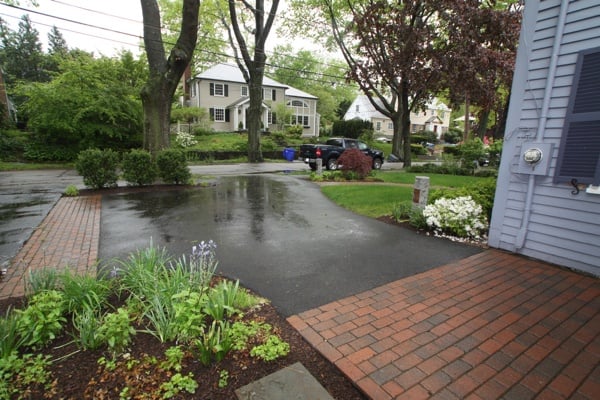When talk turns to ways of improving property value and creating more “curb appeal” – the visual attractiveness easily seen when first driving up to a home – driveways don’t quickly come to mind.
In fact, driveways get little respect in general. Builders often focus on the house and then install a driveway almost as an afterthought – building a straight and narrow driveway with minimal materials to accommodate a vehicle or two and nothing more.
If straight, narrow, and unattractive sounds like your driveway, here are some driveway design tips guaranteed to give your home more curb appeal while making your driveway more functional:
1) Design your driveway, don’t just install one Think about your driveway as a transitional space, the inviting path that brings visitors from the street to your home. As such, it can be a powerful feature that is both functional and attractive -- it doesn’t have to be just a straight strip of black asphalt. There are a number of modern driveway building materials that provide a durable, weather-resistant surface while adding beauty and style to your landscape and property.
2) Think about functionality How many people are going to be using your driveway on a regular basis? How many drivers or soon-to-be drivers are in your household and what are their daily driving routines? Where will they park? These are some of the important questions that should be answered to ensure that your driveway can effectively meet all of your needs. Try to plan for the maximum number of vehicles your driveway will need to accommodate in the coming years.
3) Take into account vehicle dynamics Vehicles have to be able to navigate your driveway easily and safely. That means understanding how they move by themselves and in relationship to others. For example, cars can’t turn at right angles, so it’s important to design any curves and turns to accommodate the sweeping motion of turning vehicles. Consider the length of your driveway and how vehicles can most easily leave it. Can they turn around or will they have to back all the way down your driveway and out into the street? If possible, it’s best to install a turn-around that enables drivers to safely drive forward out of your driveway.
The real key is making sure you have the right amount of driveway for your household. Vehicle sizes are changing constantly with much smaller, economical vehicles coming onto the market every year, as well as larger vehicles for growing families.
4) Double-check driveway width Often driveway widths are inefficient and wasteful – they’re too wide for one car but not wide enough for two. Considering that the standard parking space is 9’x18’ and the biggest is 10’x20’, a driveway width of approximately 20 feet provides plenty of room for two cars without being too much for one.
5) Consider guest parking Too often you see homes where cars are parked haphazardly off the driveway, creating unsightly bare dirt spots and erosion problems. Adding guest parking to your driveway design helps ensure you’ll have plenty of appropriate parking space while keeping your landscape in good shape. Because too much impermeable surface area can cause environmental problems such as erosion and harmful run-off, consider alternative materials to traditional asphalt. There are now many attractive, water-permeable surfacing materials such as pavers and cobblestone that allow water to pass through to the soil underneath and get filtered before entering the groundwater.

TWEETABLE TIP
Think about your driveway as a transitional space, the inviting path that brings visitors from the street to your home
VIA @GardenContinuum

Likewise, think about including permeable driveway aprons, transitional bands, and edging using materials such as crushed stone that can provide temporary additional parking space while helping the land recharge with rainwater run-off.







Leave a comment